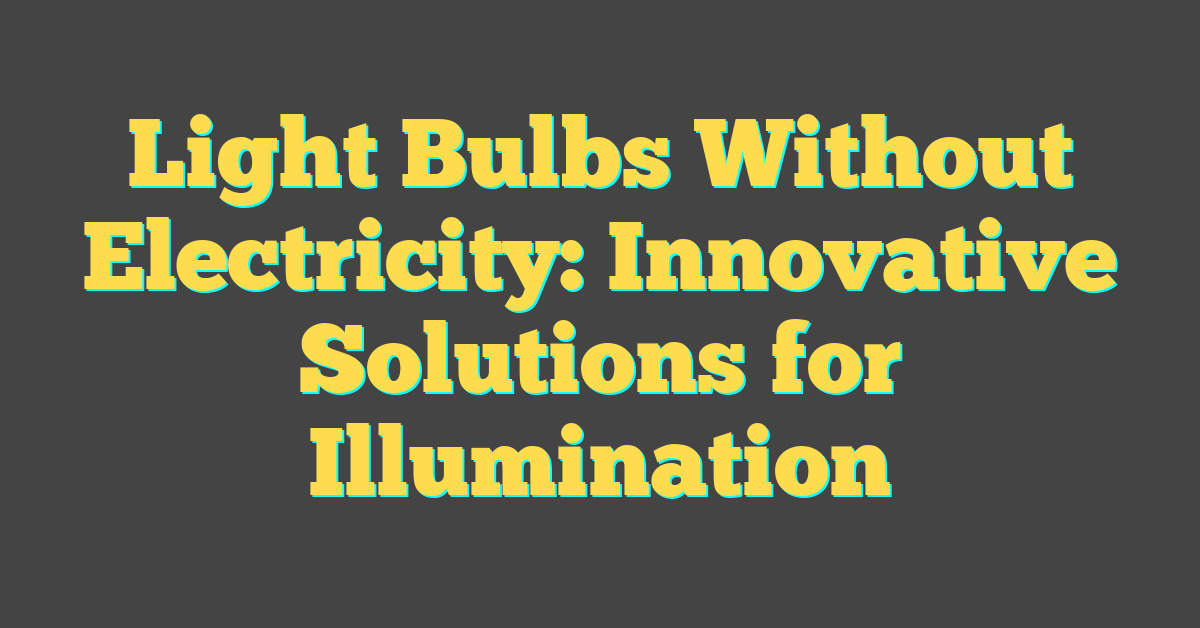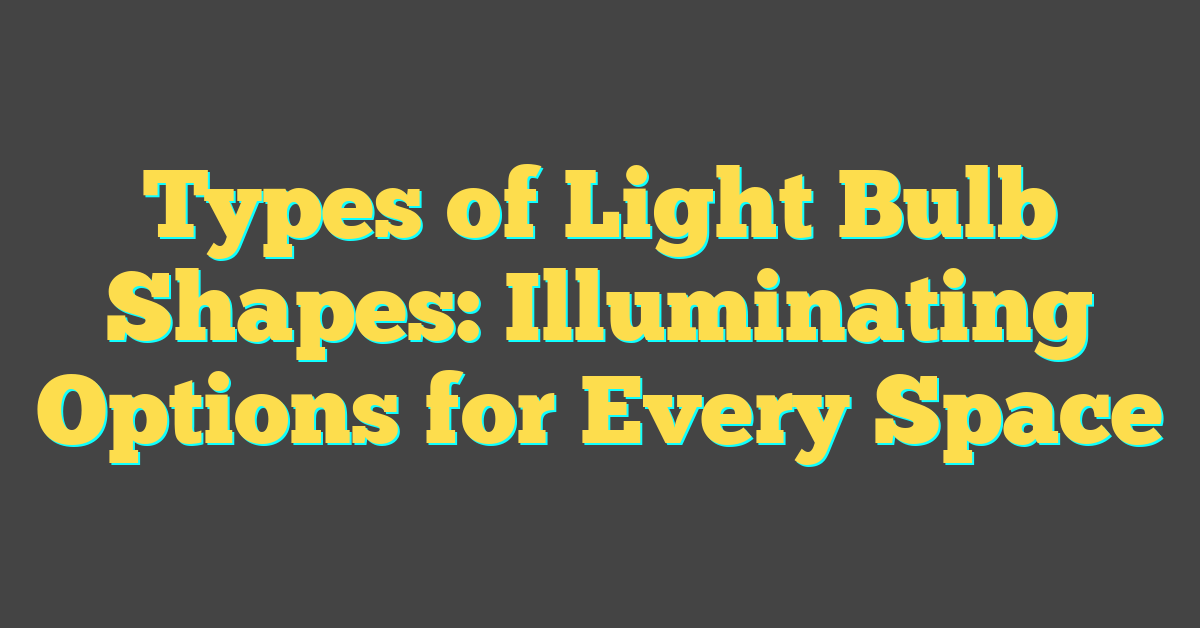As the world becomes more eco-conscious, the search for energy-efficient alternatives to traditional incandescent light bulbs has become more urgent. You’re likely familiar with the classic light bulb that has illuminated homes for over a century, but strides in technology have introduced options that not only save on energy but also provide versatile lighting solutions. LED, CFL, and halogen bulbs have emerged as frontrunners in the race to replace incandescent bulbs, offering a range of benefits, including lower energy consumption and longer lifespans.

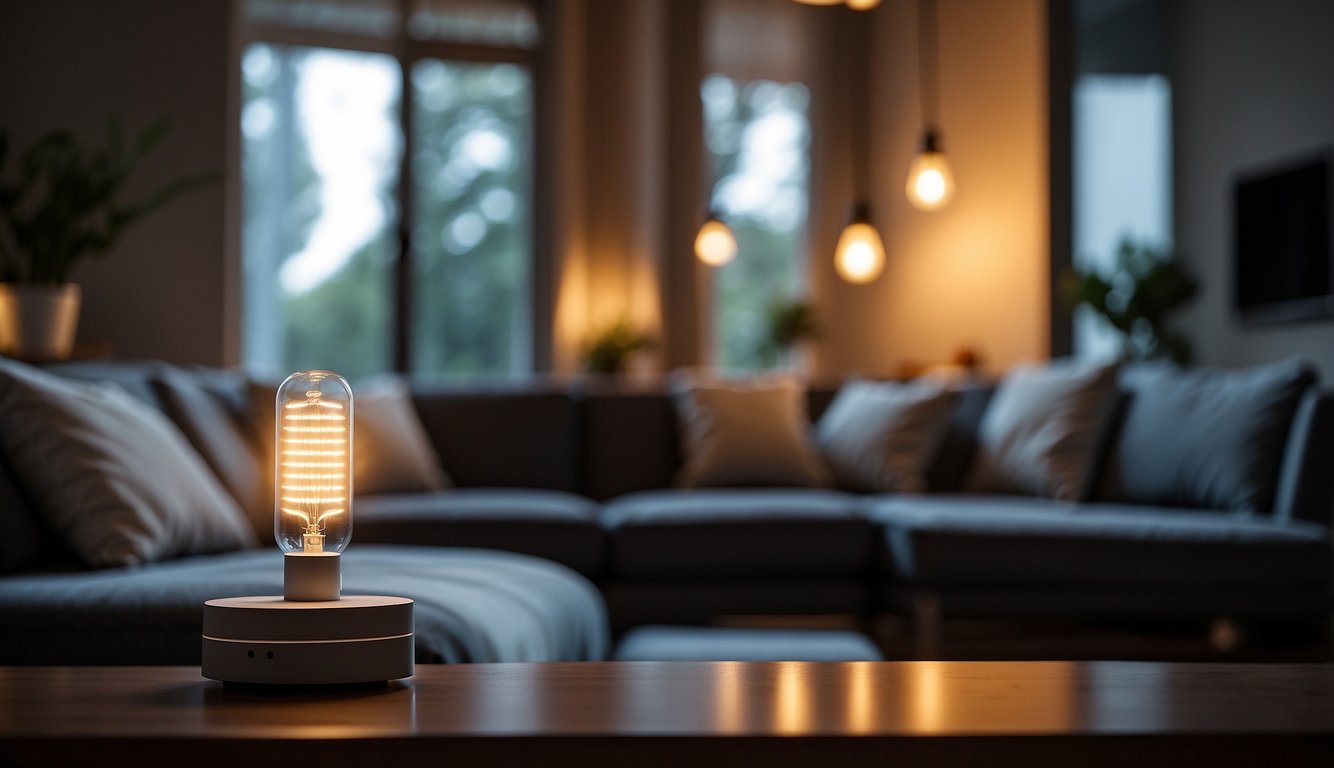
Exploring beyond energy efficiency, smart lighting technology takes illumination to a new level. Integrating lighting with smart home systems not only provides energy savings but also enhances your ability to control and customize your home lighting experience. From changing hues to syncing with your daily routines, lighting technology has transformed into an interactive component of modern living. As you navigate the array of choices, considering factors such as compatibility, innovative features, user feedback, and the overall impact on the environment can guide you to make informed decisions that align with your preferences and lifestyle.
Key Takeaways
- LED bulbs are a top choice for energy saving and long life.
- Smart lighting systems offer customizable and convenient control options.
- Upgrading to efficient lighting can have a significant environmental benefit.
Benefits of LED Bulbs
https://www.youtube.com/watch?v=KykS7nj58Oc&embed=true
LED bulbs have ushered in a new era of efficient lighting that’s not just kind to your wallet but also to the environment. Your shift to LEDs could be a game-changer in how you illuminate your home.
Energy Efficiency and Cost Savings
One of the primary advantages of LED bulbs is their energy efficiency, which translates directly into cost savings for you. These bulbs require significantly less wattage than traditional incandescents, meaning they consume less electricity. For instance, an LED that produces the same amount of light as a 60-watt incandescent may only use about 10 watts. This efficient energy usage can lead to a considerable decrease in your energy bills over time, ultimately making the slightly higher upfront cost of LED bulbs an affordable long-term investment.
- Energy Savings: Up to 80-90% more efficient than traditional bulbs.
- Cost-effective: Long-term savings on electricity bills.
Longevity and Durability
The lifespan of an LED bulb is another massive benefit. LEDs can last up to 25 times longer than incandescent bulbs. This greater longevity means you’re not just saving on your energy bills, but you’re also spending less over time on replacements. Your LED’s durability also owes to its construction—without filaments or glass, they’re sturdier and less prone to breakage.
- Longer Lifespan: LED bulbs can last up to 25,000 hours or more.
- Reduced Replacement: Less frequent need for new bulbs.
Variety in Brightness and Color Temperatures
With LED bulbs, you’re not stuck with one type of light. You have a wide range of brightness levels and color temperatures to choose from, allowing you to personalize your space to suit your taste and needs. Color temperature is measured in Kelvin (K), with lower numbers indicating a warmer, more yellow light and higher numbers indicating a cooler, bluer light. LEDs offer you the flexibility to create the perfect ambiance, whether that’s a cozy, warm hue for relaxing or a bright, crisp light for working.
- Customizable Lighting: Options from warm (2700K) to cool (6500K).
- Brightness Options: Available in a variety of lumens to fit your needs.
Smart Lighting Solutions
https://www.youtube.com/watch?v=ARQX3DsO_Yw&embed=true
In today’s connected homes, smart lighting solutions offer you both convenience and energy efficiency. With just your smartphone or voice commands, you can control lights across your entire home.
Controlling Lights with Smart Devices
Smart bulbs have revolutionized the way you manage lighting. You can adjust brightness, switch lights on or off, and even change colors using an app on your smartphone. Some smart lighting systems allow for intricate remote control options, giving you the ability to customize and schedule lighting conditions for any scenario, whether you’re at home or away.
The Integration of Voice Assistants
The rise of voice assistants like Google Assistant and Amazon Alexa has made voice controls a staple in smart home automation. With simple voice commands, you can control your smart lighting without lifting a finger. This seamless integration means you can ask your assistant to dim the lights for a movie night or brighten the room for a study session, all while potentially lowering your energy consumption. Smart lights are an ideal entry-point to smart home technology, enhancing your day-to-day life.
Compatibility and Integration
https://www.youtube.com/watch?v=HDnkXEyjI64&embed=true
When you’re looking to give your home lighting a smart upgrade, understanding how new technology fits with what you already have is key. Your existing fixtures and home network set the stage for a seamless transition.
Setting Up with Existing Fixtures
Most smart lamps and bulbs are designed to work with your current fixtures, making the switch relatively straightforward. If you’re interested in an easy-to-install option, look for smart bulbs that are dimmable and can screw into your existing sockets. Remember to check the bulb’s shape and base to ensure it fits your lamp or overhead fixture. Some options, like the Philips Hue White and Color Ambiance, allow for color changes and light temperature adjustments without the need for complex wiring modifications.
Connectivity Technologies
« Candles Before Light Bulbs: Illuminating History’s Transition
Danger of Incandescent Light Bulbs: Unveiling Hidden Hazards »
Connectivity is a cornerstone of smart lighting. Your smart bulbs can typically connect through a Wi-Fi network or Bluetooth. Wi-Fi enables you to control lights remotely, but setting up may require a compatible hub, such as a Philips Hue Bridge, for full functionality. Alternatively, Bluetooth bulbs offer direct control from your smartphone, which is convenient if you’re within range. For even more automation possibilities, explore smart plugs that integrate with IFTTT protocols, allowing your lighting to interact with other connected devices in your home.
Innovative Design and Features
https://www.youtube.com/watch?v=epk2N01UNsg&embed=true
In the realm of illumination, creativity isn’t just about aesthetics—it’s how you control and interact with your lighting. With technology evolving rapidly, your choices in light design extend far beyond the traditional bulb.
Color and Brightness Customization
Imagine adjusting your lights to the perfect shade of sunset for a cozy dinner or a cool blue for working late nights. Modern lights offer you the freedom to modify color and brightness to fit your mood or task. Smart bulbs often feature a palette of over 16 million colors, along with tunable white settings, letting you shift from warm to cool white as needed. Dimmer switches offer additional control over the intensity, ensuring your space is lit precisely how you like it.
- Colors:
- Warm tones for relaxation
- Cool tones for concentration
- Brightness:
- Bright for activity
- Dim for ambiance
Advanced Smart Bulb Functions
Smart bulbs today do more than just light up a room; they’re equipped with features that would make any tech enthusiast’s heart sing. You can control these bulbs directly from your smartphone or through voice commands. They’re capable of syncing with your daily routines or even with your entertainment—for example, pulsing in time with your favorite tunes for some special effects. Plus, they have good color rendering, meaning with a high Color Rendering Index (CRI), the colors of your room’s decor appear true to life under their glow.
- Smart Functions:
- Scheduling
- Remote access
- Voice control
- Scene setting (i.e., “movie night,” “morning routine”)
- Design and Effects:
- Slim, sleek profiles
- Sync with music or movies
- Customizable scenes
- High CRI for accurate color rendering
Popular LED Bulb Brands
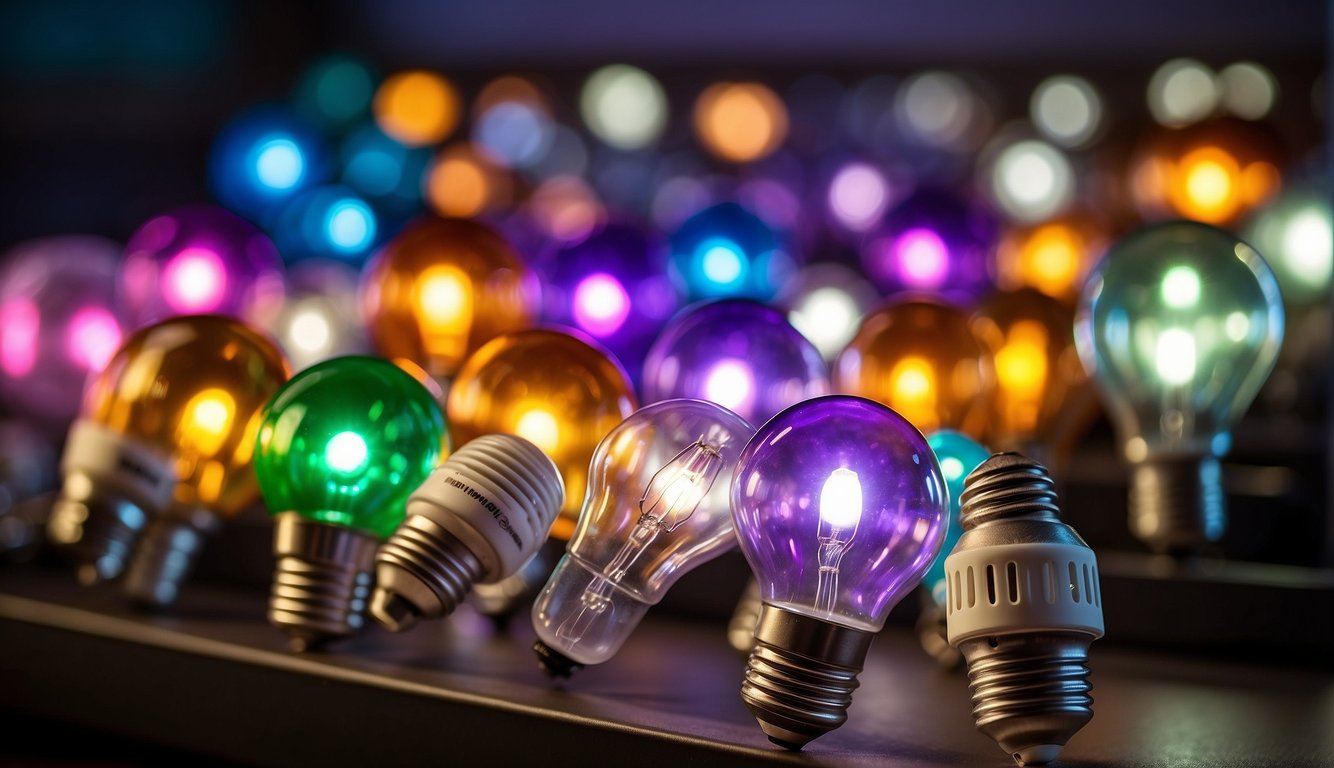
When you’re on the hunt for reliable and efficient lighting, LED bulbs are a shining solution. Let’s illuminate some favorite brands that can brighten up your space with their innovative designs and features.
Philips: As a heavy-hitter in the lighting industry, Philips offers a variety of LED options, including the renowned Philips Hue. With Hue, you’re not just getting a light bulb; you’re getting a personal wireless lighting system that allows you to control color and brightness right from your smartphone.
Signify (Philips Lighting): Though known as Signify since 2018, they still market their products under the Philips brand name. You get the trusted Philips quality with the forward-thinking technology Signify is known for.
Cree: Energy efficiency meets longevity with Cree LED bulbs. Known for their powerful illumination and durability, Cree remains a top choice if you’re looking for lighting that’s built to last.
Wyze: With smart home technology on the rise, Wyze has introduced smart bulbs like the Wyze Bulb Color and Wyze Bulb White, giving you the ability to adjust your lighting to any mood or moment—all at budget-friendly prices.
Embrace the world of LED lighting with these popular brands, each offering unique features to suit your luminous needs. Whether you’re after color control or longevity, you’re bound to find a light that fits just right.
Environmental Impact

When you switch to LED light bulbs, you’re making a choice that’s kind to your wallet and the environment. These bulbs are highly energy-efficient, translating to less electricity used and a happier planet. By using LEDs, you can reduce your carbon footprint because they require far less energy compared to traditional incandescent light bulbs.
- Energy Efficiency: With LEDs, up to 80% less energy is utilized, while still offering the same level of brightness.
It’s not just about using less energy; it’s about the impact on the world around you. When you opt for energy-saving alternatives, you support initiatives like the Energy Independence and Security Act (EISA), a commission that encourages energy independence and boosts environmental stewardship.
| Bulb Type | Energy Efficiency | Environmentally Friendly |
|---|---|---|
| Incandescent | Low | Less |
| LED | High | More |
Remember, when you’re upgrading your home’s lighting, you’re not just cutting costs, you’re also doing your part for the environment. Energy savings from LED bulbs can be substantial, with some standards suggesting LEDs can save up to 75% more energy compared to incandescents.
In your pursuit of an eco-friendly lifestyle, consider the benefits of LED lighting. Not only do you use less energy, but you also contribute to a strategy of conservation, making your ecological footprint lighter. It’s a simple switch that can lead to significant environmental benefits.
Comparative Analysis
https://www.youtube.com/watch?v=cQwxU1syGzk&embed=true
In this Comparative Analysis, you’ll discover the differences between LED, incandescent, CFL, and halogen bulbs, and learn which might be the best for reducing your energy bills and heat emittance in your home.
LED vs. Incandescent Bulbs
LED bulbs are a modern alternative to traditional incandescent bulbs. Incandescent bulbs convert only about 10% of their consumed energy into light, with the rest being lost as heat. In contrast, LEDs are much more energy-efficient, converting a significant portion of energy into light and producing very little heat. This efficiency translates into lower energy bills for you. Furthermore, LEDs have a much longer lifespan, potentially lasting up to 25 times longer than incandescent bulbs.
LED vs. CFL vs. Halogen Bulbs
Now, when comparing LED bulbs to CFL (Compact Fluorescent Lamps) and halogen bulbs, there are a few things to keep in mind. CFLs offer better energy efficiency than incandescent lamps and are cheaper than LEDs, but they don’t last as long and can contain mercury, making disposal a concern. Halogen bulbs, while slightly more efficient than traditional incandescents, still fall short compared to LEDs in terms of energy savings and lifespan. Halogen bulbs also tend to get hotter, which is something to consider if you’re looking to minimize heat emittance in your space. LEDs stand out for their low energy use, minimal heat output, and long life, making them an environmentally friendly and cost-effective option for lighting your home.
Ensuring Lighting Quality
https://www.youtube.com/watch?v=cbVOwjLLNUY&embed=true
When replacing your light bulbs, you want to ensure that your new lighting provides both the proper brightness and color for your space. Key to achieving this are understanding the metrics that measure light quality, such as lumens, kelvin, and color rendering.
Understanding Lumens and Kelvin
Lumens: This measures the amount of light that a bulb emits, often perceived as brightness. To replace a 100-watt incandescent bulb, aim for a bulb with about 1600 lumens.
Kelvin (K): This number indicates the color temperature of the light, affecting the mood of the space. Bulbs can range from soft white (~2700K) providing a warm tone, to bright white or daylight (~5000K) that have a more vibrant or cooler illumination.
Assessing the Color Rendering Index
The Color Rendering Index (CRI) is a scale from 0 to 100 percent indicating how accurately the light from a bulb renders colors compared to natural daylight. For tasks requiring the most accurate color discrimination, you should select bulbs with a CRI closer to 100. A higher CRI is especially important in places like kitchens or art studios, where true color representation matters most.
Adapting to Smart LED Technology
https://www.youtube.com/watch?v=vrJM8t_MrPY&embed=true
When you step into the world of Smart LED bulbs, you’re not just replacing a bulb; you’re upgrading to a more connected way of living. Smart LEDs can be controlled remotely from your smartphone, giving you the power to manage your home lighting anytime, anywhere.
Integration with Voice Assistants:
With compatibility for voice assistants like Alexa or Google Assistant, and even Siri shortcuts, your voice is the new switch. A simple “Turn on the living room lights” can brighten the space without a flick.
Automation Possibilities:
Imagine your lights adjusting the brightness based on the time of day or setting the mood for movie nights automatically. All this is possible through automation features smart LEDs offer. Set routines that help save energy and complement your lifestyle without lifting a finger.
Switching to Convenience:
- Remote Control: Lights left on? Use your smartphone app to switch them off.
- Scheduling: Have the lights warm up before you wake.
- Custom Scenes: Create ambiance for any occasion with color and brightness control.
Compatibility:
Ensure your smart LED bulbs are compatible with your home’s Wi-Fi network to take full advantage of remote features and voice control capabilities.
Embrace the convenience and control of smart LED technology. It’s not just about having advanced gadgets; it’s about enhancing your daily life with intuitive, user-friendly lighting solutions.
User Experience and Feedback
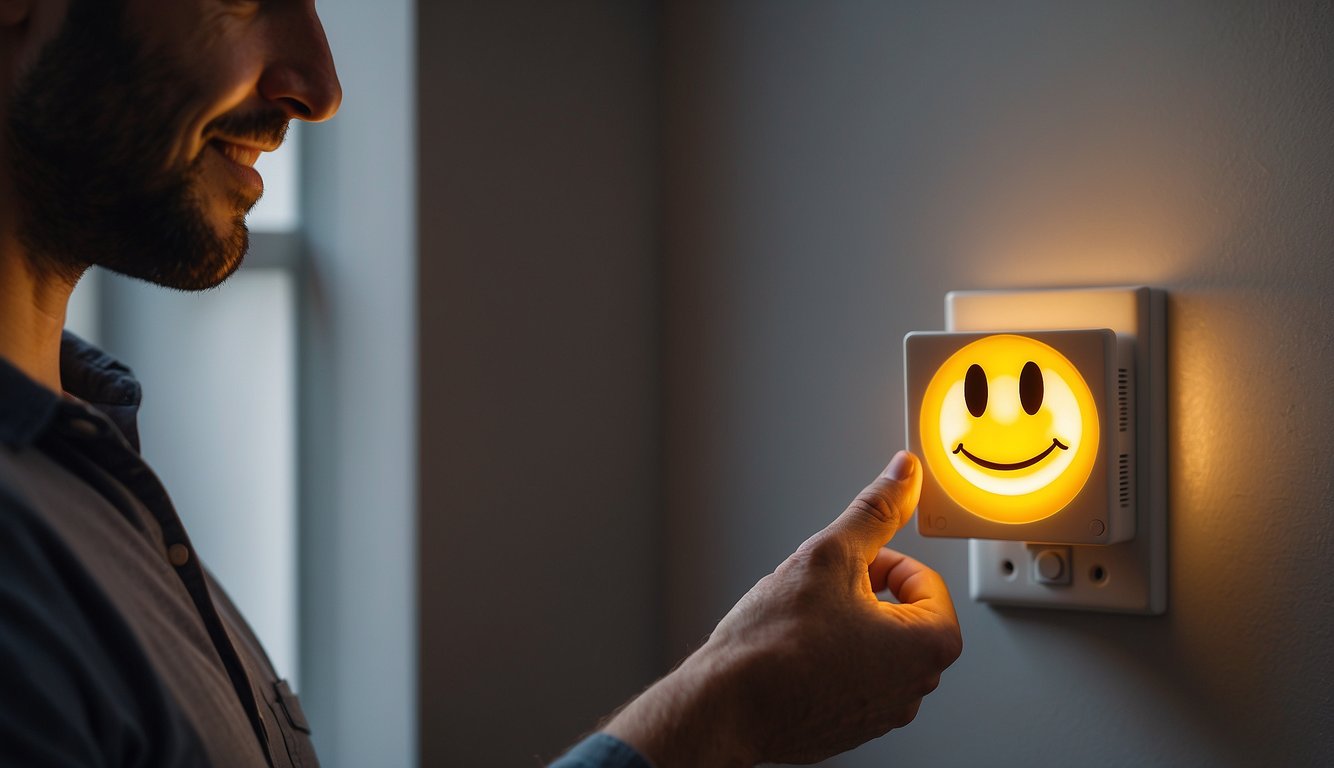
Understanding how smart LED light bulbs perform in real-life settings can give you insights into their reliability and convenience. Your experience with these products is often reflected in the product reviews and how manufacturers address common issues.
Product Reviews and Ratings
When you’re browsing through smart LED light bulb reviews, pay special attention to customer feedback on features like dimmer switches and whether the bulbs operate without flickering or buzzing. It’s important for you to see if the overall sentiment leans towards satisfaction, and if the ratings suggest that the product is reliable. Here’s a brief breakdown:
- Average Ratings: Look for products with a high average rating, typically 4 stars or above.
- Volume of Reviews: A higher number of reviews may indicate a tried-and-tested product.
Addressing Common Issues
You might find that common issues such as flickering or connectivity problems with smart LED bulbs are often discussed in reviews. It’s vital to notice if and how the manufacturers respond to this customer feedback. For instance, some issues like flickering or buzzing are tackled by improving compatibility with various dimmer switches. Convenience features such as app controls without the need for cloud connection as mentioned in the Philips Wiz Smart Wi-Fi LED Color Bulb review, could be a sign of a user-friendly product. Look out for these specifics:
- Resolved Issues: Manufacturers should actively resolve common problems.
- Feedback Response: Quick and helpful responses to customer feedback demonstrate good customer service.
Cost-Effective Transitioning Tips
https://www.youtube.com/watch?v=6x80fnY3B3g&embed=true
When shifting to efficient lighting, understanding cost-saving strategies and research is essential for a budget-friendly transition. Keeping energy costs low while optimizing lighting quality can be effortless with careful planning and leveraging available incentives.
Planning and Research
Embarking on the switch to energy-efficient lighting begins with meticulous planning. Initially, assess your current lighting by noting the wattage of existing bulbs and identifying the most frequently used fixtures in your home. For example, replacing a 60-watt incandescent bulb with an energy-efficient LED bulb that uses only 10 watts can significantly reduce your energy consumption. Research different LED options by examining lumens — the true measure of light output, not watts. Aim for bulbs offering the same lumens as your current incandescent or fluorescent bulbs but at a lower wattage, to trim down utility bills.
Maximizing Savings and Incentives
To maximize savings, it’s crucial to explore incentives offered for energy-efficient upgrades. Utility companies often provide rebates for purchasing LEDs or implementing energy-saving measures. Scheduling the transition during sales or utilizing bulk purchase discounts can also lead to immediate cost reductions. Moreover, consider using timers and smart lighting controls to only use lights when needed, further curbing your energy bills. Stay informed about government grants or tax breaks that support energy-efficient upgrades, which can offset initial investment costs and hasten payback periods.
Implementing these cost-effective transitioning tips, you’re not just decreasing monthly outlays but also investing in long-term affordability and sustainability for your home’s lighting needs.


